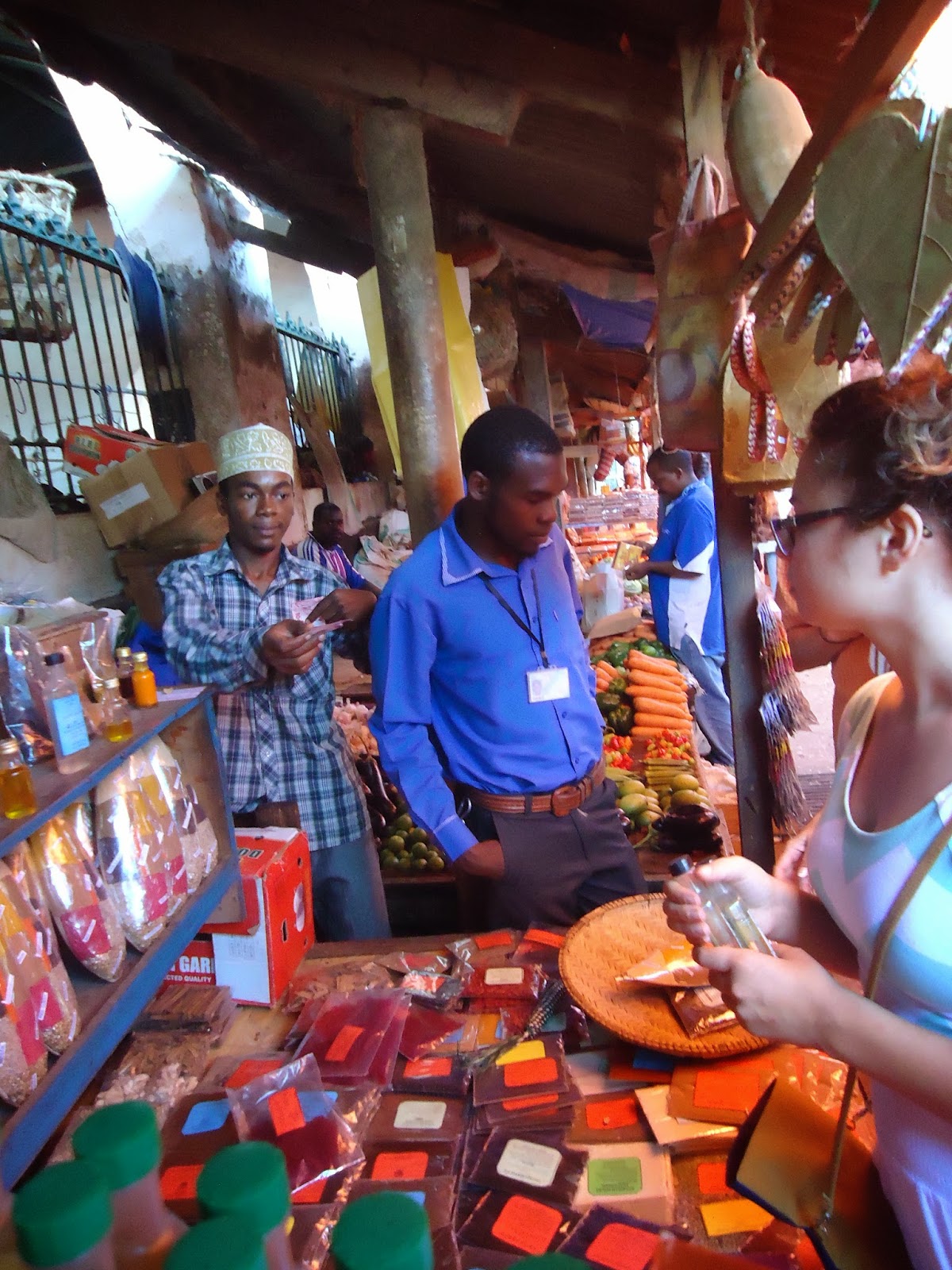My little sister asked me what the markets are like so…this
one’s for you Noelle.
 You can usually hear the market from a mile away. It’s not
that Arusha has ever been quiet enough for noise to carry, but rather these
prime markets draw so much attention it’s impossible to ignore. The main one
I’ve found myself at is Soko Kuu (The Head Market). This markets hosts
everything from fresh produce to dagaa (small fish) to clothes to cooking ware.
Just outside the main market place are smaller carts filled with phone
vouchers, head bands, and pictures of Obama. Tanzanians have four foreigners
they truly love: Bob Marley, The Pope, Chris Brown, and Obama – in no particular
order.
You can usually hear the market from a mile away. It’s not
that Arusha has ever been quiet enough for noise to carry, but rather these
prime markets draw so much attention it’s impossible to ignore. The main one
I’ve found myself at is Soko Kuu (The Head Market). This markets hosts
everything from fresh produce to dagaa (small fish) to clothes to cooking ware.
Just outside the main market place are smaller carts filled with phone
vouchers, head bands, and pictures of Obama. Tanzanians have four foreigners
they truly love: Bob Marley, The Pope, Chris Brown, and Obama – in no particular
order.
Spattered among the carts are men on motorcycles (piki
pikis) offering their taxi services and heckling women. Aside from a few
private drivers and public buses (dala dalas), most people have come to the
market on feet. They carry with them a few plastic bags or kangas to hold the
items.
As I pass into the main market, I see piles upon piles of
fresh fruit…mango, pineapple, coconuts, passion fruit, guava, papaya –
essentially an endless supply of not so exotic fruit for incredibly cheap
prices. Some vendors offer sugar cane or freshly prepared spices. Fresh milk
and eggs have been brought down from the mountain tribes. Old women stand
proudly by their stalls filled with brightly colored textiles for dresses,
curtains, blankets and kangas. Aside from this, you can find knockoff
sunglasses, stolen iPhones, cooking ware, and makeup. Hairdressers, dressmakers
and tour guides wander through the crowds offering their services.
Nothing has a price tag on it, but rather the tumult is
filled with bartering as the seller and buyer try to assess their opponent and
receive the best deals. You can hear a variety of animals caught in the crowded
market. This is also the best place to buy fresh meat and even live animals as
Soko Kuu is the central market to bring sheep, goats, cows, donkeys and
chickens.
It’s nearly impossible to navigate through the crowd. Some
stalls have walls and others are nearly a few buckets filled with items. Each
seller calls out their items and encourages you to come appreciate their items.
The heat and dust mix with the smell of goats and sweat, choking you and
inspiring a purchase of fresh bananas.
Once purchases have been finalized, you can walk away with
large baskets of fruit for only a few thousand shillings (not even five
dollars). Most women leave the market with a baby in a kanga on their back and
a basket of fruit on their head.


This made me miss home --- Mimi hupenda siku ya soko sana
ReplyDeleteNancy